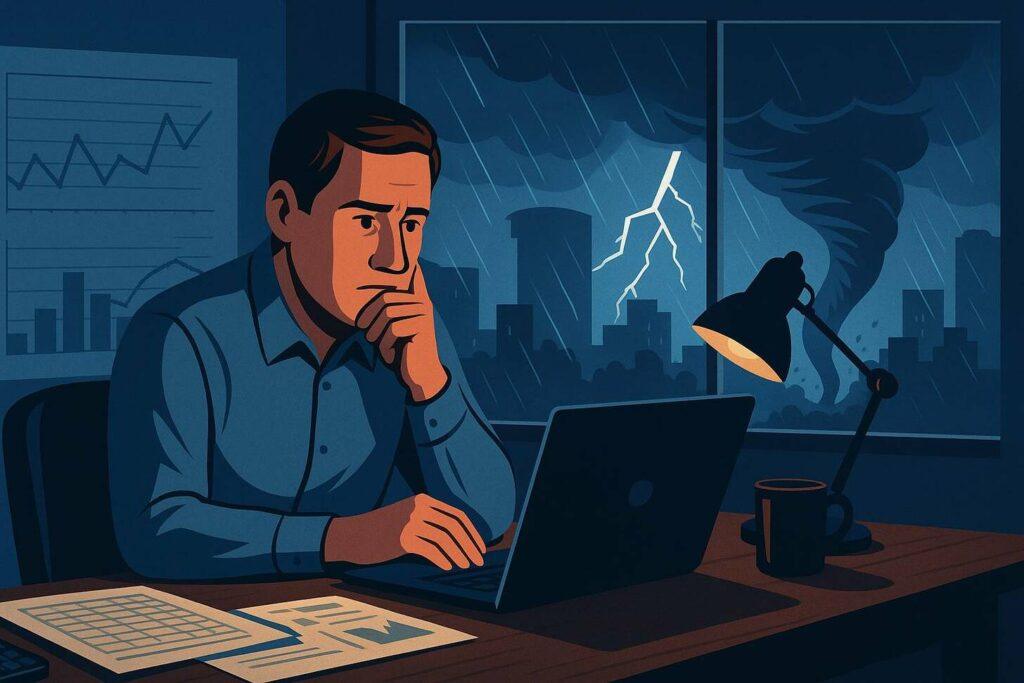How do we make decisions when the future feels impossible to predict? That’s where the Knightian uncertainty mental model comes in. Unlike risks with clear odds—like a coin flip—this concept tackles situations where probabilities are unknown. Think of it as the difference between betting on a roulette wheel and navigating the impact of AI on jobs.
Economist Frank Knight introduced this idea in the 1920s. He argued that true uncertainty isn’t just “risk with missing data.” It’s when outcomes are so unpredictable, we can’t even guess their likelihood. For example, launching a business involves known risks (like competition) and unknowns (like sudden market shifts).
Why does this matter today? From policy debates to investing, recognizing unquantifiable uncertainty helps avoid overconfidence in forecasts. As Knight and John Maynard Keynes emphasized, treating every challenge like a calculable gamble can lead to costly mistakes. This mental model reminds us to stay flexible when facing the unexpected.
Key Takeaways
- Knightian uncertainty mental model describes scenarios where probabilities can’t be measured, unlike predictable risks.
- Frank Knight’s work highlights the gap between “known unknowns” and truly unforeseeable events.
- Examples range from tech disruptions to global crises—situations where data falls short.
- This concept is vital in economics, policy, and decision-making frameworks.
- Accepting uncertainty fosters smarter planning and reduces reliance on flawed predictions.
Knightian Uncertainty Mental Model Foundations
Imagine planning a picnic when you don’t know if it’ll rain. That’s the difference between risk and true unpredictability. One has clear odds (like a 30% chance of showers), while the other leaves people guessing entirely about the uncertainty of the situation and the issues that may arise.
When Numbers Fail Us
Risk is like flipping a coin—you know half the time it’ll land heads. But what about launching a product no one’s ever seen? Economists like Frank Knight called this “unmeasurable unknowns” in the context of uncertainty.
In his 1921 book, Risk, Uncertainty, and Profit, he showed why some challenges in economics defy probability math and require a different approach to policy.
Knightian Uncertainty Mental Model: Great Minds Agree
John Maynard Keynes compared economic planning to “a dark room with hidden obstacles.” Both he and Knight argued that pretending to calculate the incalculable leads to disaster. Their working papers from the 1920s still shape how leaders approach policy and crises in the face of uncertainty in economics today.
Why This Matters Now
From climate policy to tech innovation, we face puzzles where past data doesn’t help. That’s why smart teams use probabilistic thinking alongside backup plans. Instead of betting on one outcome, they prepare for multiple scenarios—like packing both sunscreen and umbrellas.
Ever tried predicting next year’s trends amidst uncertainty? Even experts lean on flexible frameworks when odds are murky, relying on information and news to guide their decisions. As Knight famously said: “The only certainty is that we must act without full knowledge.”
Lessons From The 2008 Financial Crisis

History often teaches tough lessons—the 2008 meltdown shows why guessing isn’t enough. Banks and investors relied on math models built on decades of housing data. But when home prices suddenly dropped, those tools couldn’t handle the chaos. Like expecting sunscreen to work during a hurricane.
Underestimating Risk with Historical Data
Most models assumed markets would behave like they did in the 1990s. They missed how new mortgage products could trigger a domino effect.
The IMF found market liquidity plunged 45%—a shock no algorithm predicted. It’s like driving using only a rearview mirror.
| Approach | Assumption | Outcome |
|---|---|---|
| Traditional Models | Past trends = future results | Failed to spot housing collapse |
| Real-World Events | Unpredictable human behavior | Global economic spiral |
Insights from IMF Research and Market Liquidity Collapse
IMF working papers revealed a truth: even advanced analysis can’t map every possibility. Decision-makers learned to pair numbers with “what-if” plans. Ever trusted numbers that later proved wrong? That’s why smart teams now test multiple scenarios.
The crisis reminds us—prepare for curveballs. Build buffers. Stay nimble. As one economist joked: “If your plan survives first contact with reality, it’s probably too simple.”
Applying to Business and Decision-Making

What’s your backup plan when spreadsheets can’t predict tomorrow? Smart leaders treat unknowns like changing weather—prepare for sun and storms. Instead of chasing perfect forecasts, they build adaptable systems that promote sustainability and instill confidence in their policy methods.
Embracing Flexibility with Scenario Planning
Ever packed for a trip with changing weather? That’s scenario planning. Businesses create multiple “what-if” stories—like planning for supply chain hiccups or sudden demand spikes. McKinsey found companies using this approach recover 30% faster during crises.
Avoiding Overconfidence in Forecasts
Remember 2008? Banks trusted models that ignored human behavior. Today’s leaders balance data with intuition. One tech CEO keeps 18 months of cash reserves—not because numbers say so, but because “surprises love Mondays.”
Real-World Strategies for Uncertain Environments
Try these tactics:
- Stress-test plans against wild events (like a 50% sales drop)
- Use stop-loss rules in investing, similar to exit strategies in product launches
- Build cross-trained teams ready to pivot
Frank Knight’s working papers remind us: True strategy isn’t about predicting—it’s about preparing. As one CFO told me, “We don’t bet the farm on one crop. We plant gardens.”
Conclusion
When the rules of the game keep changing, how do you stay ahead? Frank Knight’s working papers revealed a truth we can’t ignore: some challenges defy simple math and present real problems of uncertainty.
Unlike measurable risk—like betting on a coin toss—true unpredictability requires more than spreadsheets and historical data. This is the basis for understanding how to navigate these challenges.
The 2008 crash taught us this harshly. Even advanced models couldn’t predict how housing markets would collapse like dominoes. Today’s smartest leaders use scenario planning instead of clinging to rigid forecasts. Think of it as packing both sunscreen and rain boots—no matter the forecast. This initiative to adapt is crucial in a world of uncertainty.
Here’s the takeaway: Prepare, don’t predict. Build financial cushions. Test backup plans. Stay curious and ask the right questions. As one Wall Street veteran told me, “If your strategy survives Monday morning, it’s probably too basic.”
So, ask yourself: What’s my Plan B? How quickly can I adapt? For more practical approaches, explore our free guides or download our recommended books for further insights. Remember—being ready beats being right every time. Are you packing your umbrella yet?


